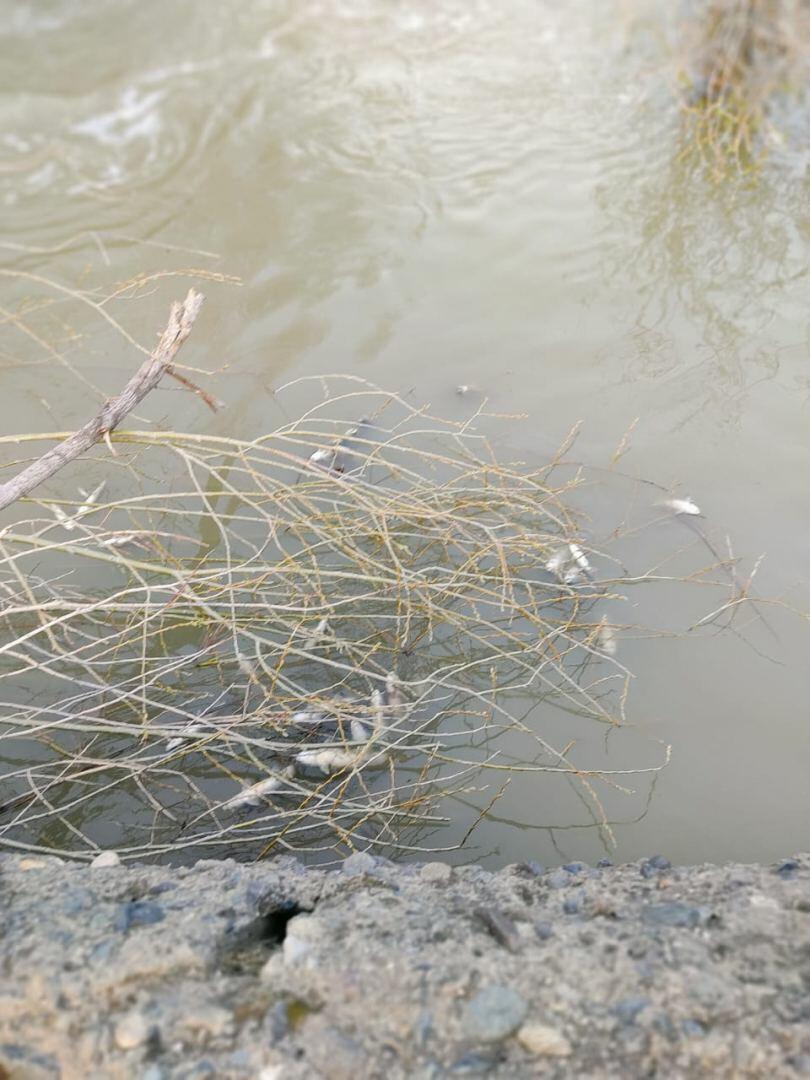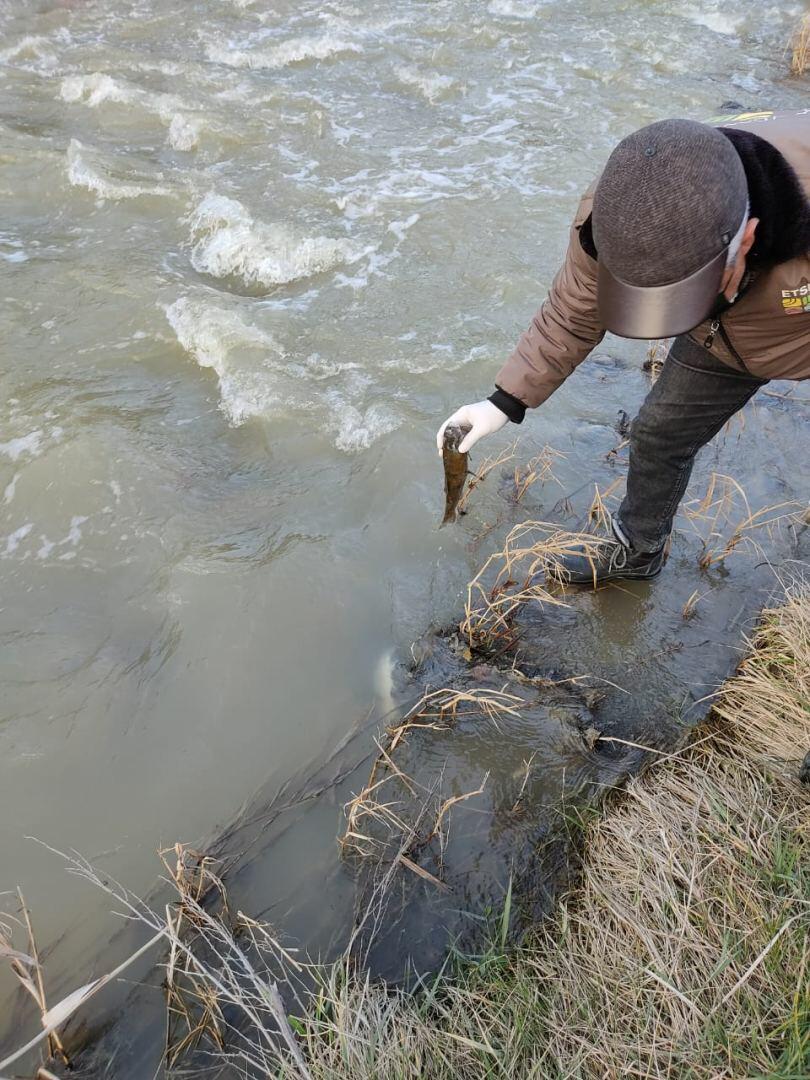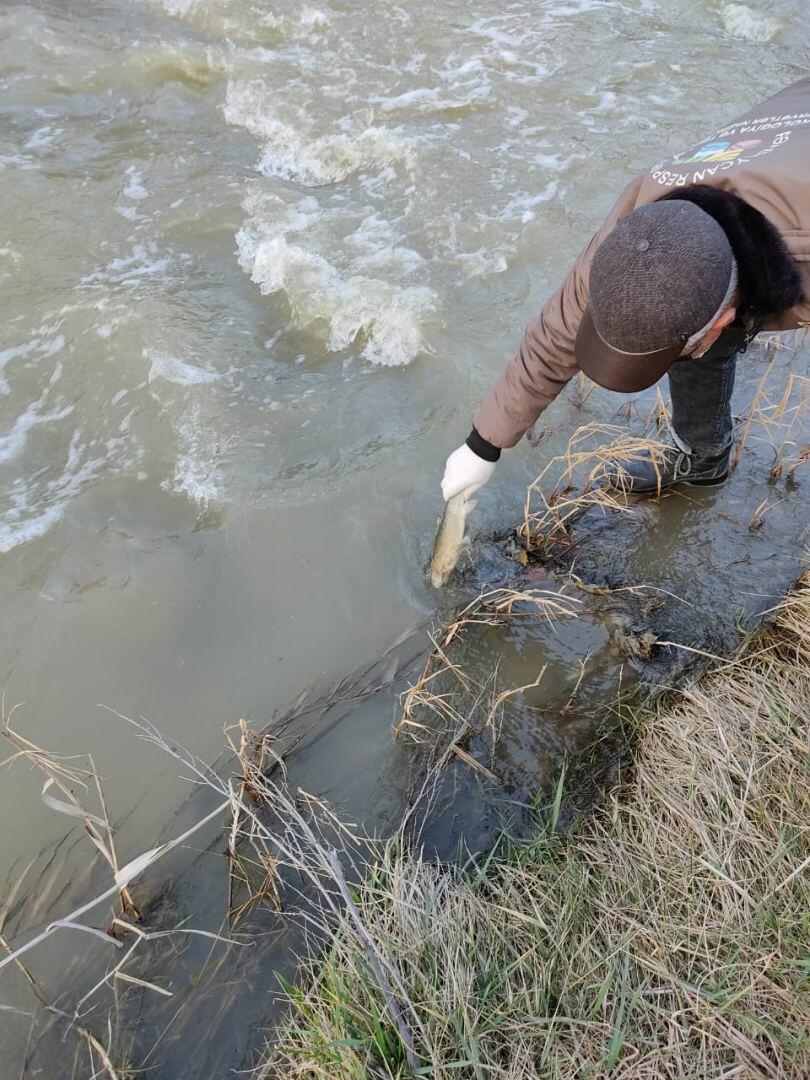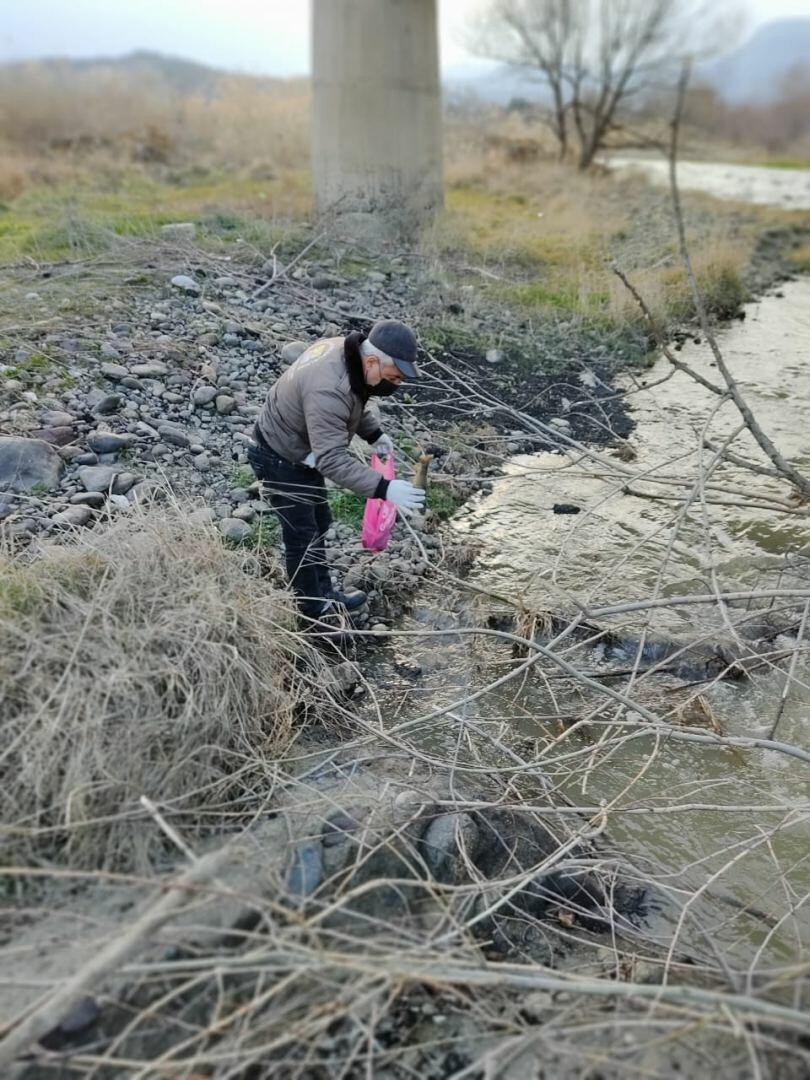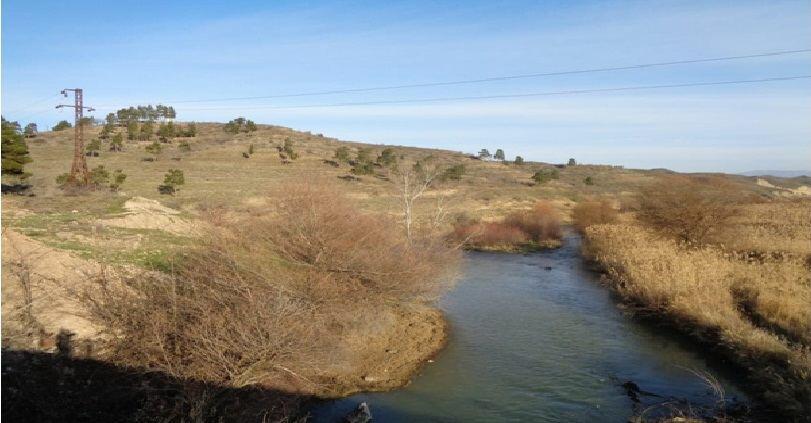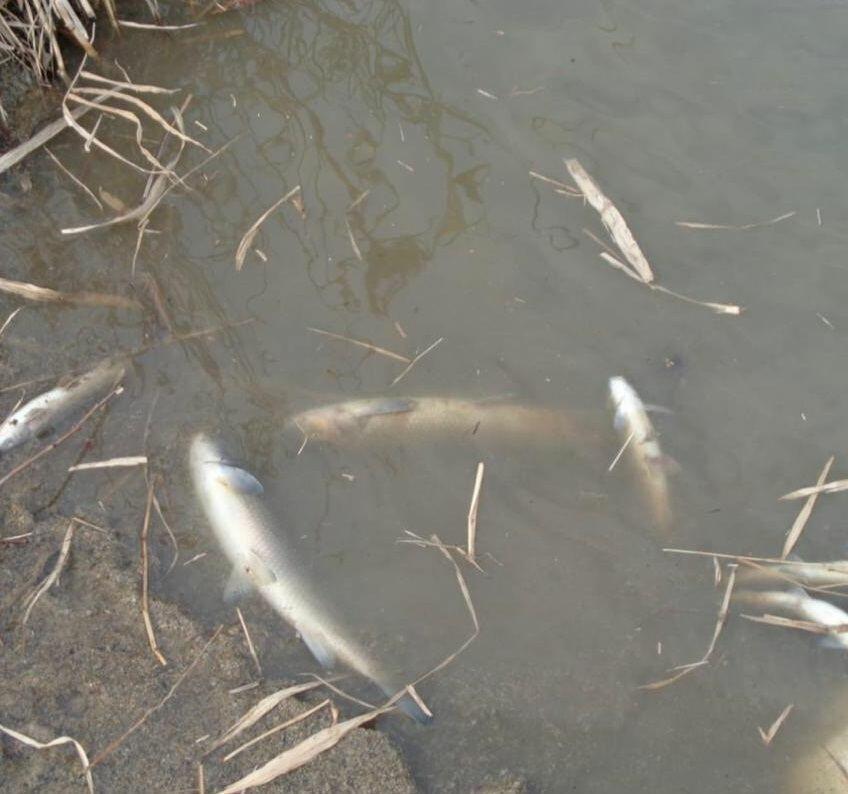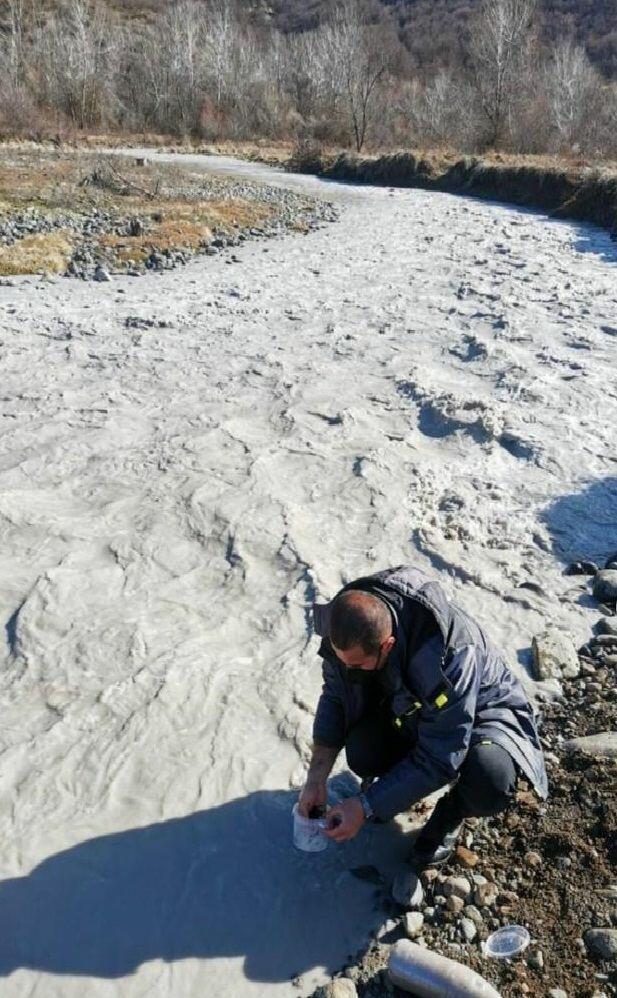Azerbaijan warns against transborder river's fatal pollution by Armenia, German company [PHOTO/VIDEO]
![Azerbaijan warns against transborder river's fatal pollution by Armenia, German company [PHOTO/VIDEO]](https://www.azernews.az/media/2021/06/30/oxchucay_290621_10.jpg)
By Vafa Ismayilova
Azerbaijan’s Ecology and Natural Resources Ministry has warned against a catastrophic scale of pollution in the transboundary Okhchuchay River by Armenia and a German company, which is the main shareholder of the Zangazur copper-molybdenum plant located in Syunik region.
The Zangazur copper-molybdenum plant, the main shareholder of which is Germany’s Cronimet Mining company, poses a serious threat to the environment and human health, polluting massively the Okhchuchay River, head of the ministry’s international cooperation department Emin Garabagli said.
The basin area of the 83-km Okhchuchay River, which is the Araz River’s left tributary, is 1,175 square kilometers. The river originates on the Gapidzhig mountain (3,285 meters) of the Zangazur ridge.
The river, most of which is located in Armenia’s Syunik region (Azerbaijan’s historical Zangazur region), flows through liberated Zangilan into the Araz River.
The main streams of water are formed from snow (46 percent), rain (10 percent), and groundwater (44 percent). The average annual water flow is 10 cubic meters per second, the average annual volume is 315 million cubic meters, 40 percent of the annual flow is formed in spring, 43 percent in summer, 10 percent in autumn, and 7 percent in winter.
Transboundary pollution of the Okhchuchay River
Approximately 70 percent of Azerbaijan's groundwater resources are formed in neighboring countries due to the transboundary water flows. The transboundary river Okhchuchay is constantly polluted in Armenia by wastes from the Gafan and Gajaran mining industries, playing the role of a collector of industrial waste.
These industrial wastewaters are discharged into the river untreated and this increases the level of pollution at times. Therefore, these water resources are considered unsuitable for use on the Azerbaijani territory. In addition, Okhchuchay flows into the second large river in the South Caucasus - Araz, and pollution directly affects its quality and water reserves.
The Araz River, the largest tributary of the Kur River, is also a transboundary river with Armenia and plays a decisive role in the irrigation of Azerbaijan’s cultivated areas. However, due to a serious change in the quality of water in the river, its use for domestic and agricultural needs can have an extremely negative impact.
It is no secret that water pollution with heavy metals and salts occurs due to the discharge of industrial wastewater generated as a result of mining and processing activities. The location of the largest mining enterprise in Armenia’s Syunik region on the Okhchuchay river (in Armenia it is called Vogzhi) gives grounds to assert that it is polluted from these sources.
Wastewater containing heavy metals, several times higher than the norm, is discharged into the river by the Gajaran copper-molybdenum and Gafan mining and processing plants. This destroys not only the river’s fauna and ecosystem but is also extremely dangerous for human health. The use of contaminated water can lead to harmful consequences - diseases of the gastrointestinal tract, destructive processes in the kidneys and bone tissue, disorders in the cardiovascular and nervous systems.
Monitoring results for 2021
Ecologists have carried out monitoring on the rivers flowing through liberated Zangilan region’s territory.
A large amount of heavy metals, in particular copper, molybdenum, iron, zinc, chromium, and manganese, were found in water samples taken in the Okhchuchay River in January-June 2021. Ecology and Natural Resources Ministry’s monitoring reports say that the content of the copper-molybdenum compound in the river was twice the norm, iron - four times, nickel - seven times, and due to the pollution, the water’s color in the river periodically changed.
In March 2021, the massive death of the golden trout (small trout) was recorded in the river. As a result of the monitoring carried out at different times - in high water and at low water levels - it was found that the content of heavy metals throughout the year was much higher than the norm.
The massive death of 227 species of golden trout and 330 species of barbel included in the Red Book of Azerbaijan was recorded during visual monitoring conducted in the Okhchuchay River near Zangilan region’s Shayifli and Jahangirbayli villages on March 7, 2021. The high content of iron, copper, nickel, molybdenum, and other heavy metals in the water the reason for the death of the fish.
Under the Ecology and Natural Resources Ministry order, water samples from the river and bottom sediments were analyzed in an internationally accredited laboratory SGS (Germany) on the basis of a contract with Societe General de Surveillance Azeri Ltd LLJ.
Test results of water samples taken from the Okhchuchay River revealed a high content of heavy metals, in particular, iron, copper, manganese, molybdenum, zinc, chromium, nickel, and others on the surface. It was found that the concentration of hazardous substances in sediment samples is much higher than the norm and the river’s pollution level is critical.
Role of international organizations
Unfortunately, Armenia has not yet joined the Helsinki Convention on Transboundary Water Basins. This international document, which was adopted in Helsinki in 1992, plays the role of a mechanism for the environmentally sound management of transboundary surface and groundwaters and the strengthening of international cooperation and national measures aimed at their protection.
Given this, the Ecology and Natural Resources Ministry turned to international organizations over the river’s critical state. The ministry also aims to inform these agencies about the expected environmental risks for the river and its ecosystem due to prolonged pollution from Armenia and to prevent this pollution.
Letters addressed to UNEP (UN Environment Programme) Regional Office Director for Europe Bruno Pozzi and UNECE (United Nations Economic Commission for Europe ) Executive Secretary Olga Algayerova on this occasion, provide information that Okhchuchay is in a state of the environmental crisis. They were urged to take steps to curb the transboundary pollution that contributes to the irreversible destruction of the region’s unique ecosystem.
Relevant appeals were also made to the secretaries of the UNECE Convention - the secretary for the protection of transboundary watercourses and international lakes, Sonja Koeppel, and the secretary of the Convention on Environmental Impact Assessment in a Transboundary Context, Tea Aulavuo.
In addition, a letter was sent to the head of the Iranian Environment Department, Isa Kalantari, on the need for common actions to curb this negative transboundary impact on the two countries’ environment. It was also proposed to create a joint working group that will serve as a common solution to this problem.
The ministry also turned to the German Bundestag, representatives of the Greens Faction, urging them to focus on the activities of the Zangazur copper-molybdenum plant, the main shareholder of which is the German company Kronimet Holding operating the Gajaran mine, which poses a serious threat to the environment and human health.
Corresponding appeals and letters were addressed to Chairperson of the German Bundestag’s Environment, Nature Conservation and Nuclear Safety Committee Sylvia Kotting-Uhl, Speaker of the Bundestag Environment, Nature Conservation and Nuclear Safety Committee Steffi Lemkee, and Green Faction representative Bettina Hoffmann.
The letters express expectations that the German government, civil society, and the public will address the issue as soon as possible, and react to the concerns of many Armenian environmental organizations about the Okhchuchay River’s serious pollution in Armenia and facts about this in the Armenian media.
--
Follow us on Twitter @AzerNewsAz
Here we are to serve you with news right now. It does not cost much, but worth your attention.
Choose to support open, independent, quality journalism and subscribe on a monthly basis.
By subscribing to our online newspaper, you can have full digital access to all news, analysis, and much more.
You can also follow AzerNEWS on Twitter @AzerNewsAz or Facebook @AzerNewsNewspaper
Thank you!

